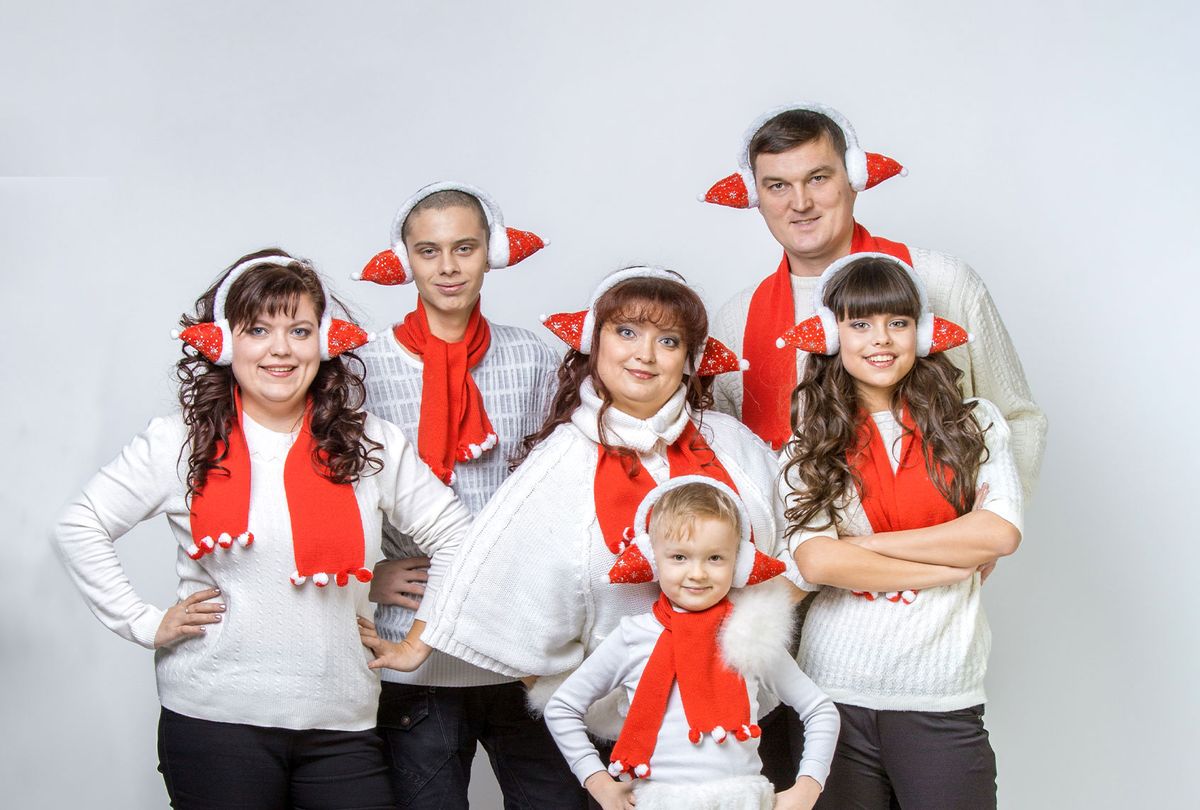Maybe I've just listened to too many podcasts about cults, but, families who dress alike, you creep me out.
I'm sorry. I never want to yuck another's yum, and on my abnormally long list of "Things Other Families Do that Bother Me," photo shoots in matching outfits falls well below gender reveal parties and bribing your child's way in to the Ivy League. And as we find ourselves currently deep in the midst of summer family portraits at the beach season, my first wish is for every family to be healthy and safe. But also, you really are giving me cult vibes.
The sartorially coordinated family is not a recent invention. Writing in The Atlantic in 2018, Kimberly Chrisman-Campbell noted that siblings have been going matchy-matchy for centuries. And in circumstances where families are making their own clothes, one might sensibly want to get the maximum bang for the buck out of their fabric, as everyone who's seen "The Sound of Music" could tell you.
But parents have historically stayed out of the act. Chrisman-Campell notes how that changed at the turn of the 20th century, when French couturier — and working mom — Jeanne Lanvin started designing children's clothing that echoed her adult creations. The Mommy and Me look was born, and before long it had trickled down to the ready-to-wear crowd.
What then followed were, at least in a certain portion of the American consciousness, decades of magazine ads featuring smiling housewives and their feminine, miniature doppelgängers in matching outfits — with Dad and the boys sportingly joining in for Christmas pajamas- and sweaters-related moments.
For those of us of a certain generation, however, the very idea of intergenerational twinning conjures up nothing so much as Faye Dunaway in "Mommie Dearest." At best, there might be an association to an entire subcategory of Awkward Family Photos. For many of us raised on reruns of "The Partridge Family," it would be difficult to pin down which idea sounds weirder — that a child would willingly dress like their parents, or that a parent would dress like one's children.
It's entirely possible that my deep and visceral distrust around dressing alike has something to do with those eight years I spent in Catholic school. It doesn't really matter if you're all wearing t-shirts that say "SQUAD," I just read it as, "Enforced Conformity." Not that this was ever a problem I had to face as a parent. From their earliest days, my daughters asserted their own individual styles. My firstborn can be described as ren faire casual, while my younger daughter sprang, fully formed, from the head of Brandy Melville. Even when they were in their "Sesame Street" years, they would no sooner have voluntarily dressed like each other — or worse, me — than they would have let their carrots touch their chicken nuggets. The closest we ever got were the all-but-required Thing 1 and Thing 2 tees they once sported on an Orlando vacation.
But while my kids were growing up with a quiet yet pronounced disdain for any show of aesthetic unity, other families leaned in hard. It's no coincidence that the rise of matching outfits aligns neatly with the ego vortex known as family social media. The Holderness Family — Penn, Kim, Lola and Penn Charles — became a viral juggernaut with their 2013 YouTube ode of "Christmas Jammies." Three years later, The Boston Globe reported that "The tradition that first revealed itself on social media several years ago has now become a full-blown consumer event, with young families spending as much as $500 for the photo-ready sets. Target expects to sell 500,000 family pairs of holiday pajamas this season."
Parents looking to monetize their offspring have learned that nothing says ka-ching ka-ching like people who are related to each other in the same style of attire. "We're a pretty-synced-up family," dad of triplets Ryan Beck told the Washington Post in 2019. "If we're going to the mall, we'll all wear jeans and a green shirt or something like that." I feel like Wes Anderson has a lot to answer for here. Two years later, the Beck family have over 250,000 followers on Instagram, and are still incredibly "synched up."
Synchronicity has not just been a boon for aspiring influencers. Big retailers, from Neiman Marcus to J. Crew to Old Navy, have cashed in on the matching and "coordinated" trend. Hannah Anderson, once synonymous with the holidays, offers matching pajamas all year long. It's ingenious — why entice a shopper to buy one Hawaiian print shirt when you can sell five? Capitalism triumphs again! As Old Navy's senior vice president of merchandising Andres Dorronsoro told the Washington Post two years ago, "It's really become an everyday trend. 'It's Wednesday. Let's wear the same thing, take a picture and share it on Instagram.'" Okay and then what?
Social media can create the impression of family life as one big tidy yet whimsical, harmonious yet quirky romp. And nothing says unity like a uniform. But closeness needed't come from subsuming individuality. I was encouraged recently to see family photographer Sophia Lemon advise on her site, "Do not match! Not every color or fit works for every person."
It can be very validating, in the real world chaos of parenting, to show to the world that we're all on the same team. It can be comforting, in the divisiveness of our culture, to declare similarity. I'm remembering how earlier this year, author Joshua Coleman talked here in Salon about the rise of familial estrangement and observed that "We're no longer defined in relationship as much, in marriage, church, neighborhood, etc." As our cultural isolationism and individualism becomes more pronounced, maybe it's no wonder we seek reassurance in the cozy embrace of matching jammies. Maybe we just want to prove we're not alone.



Shares